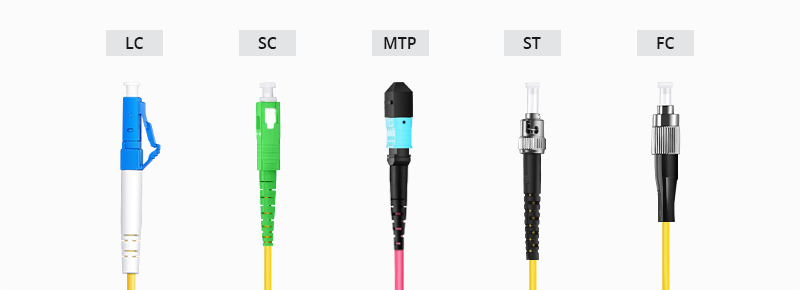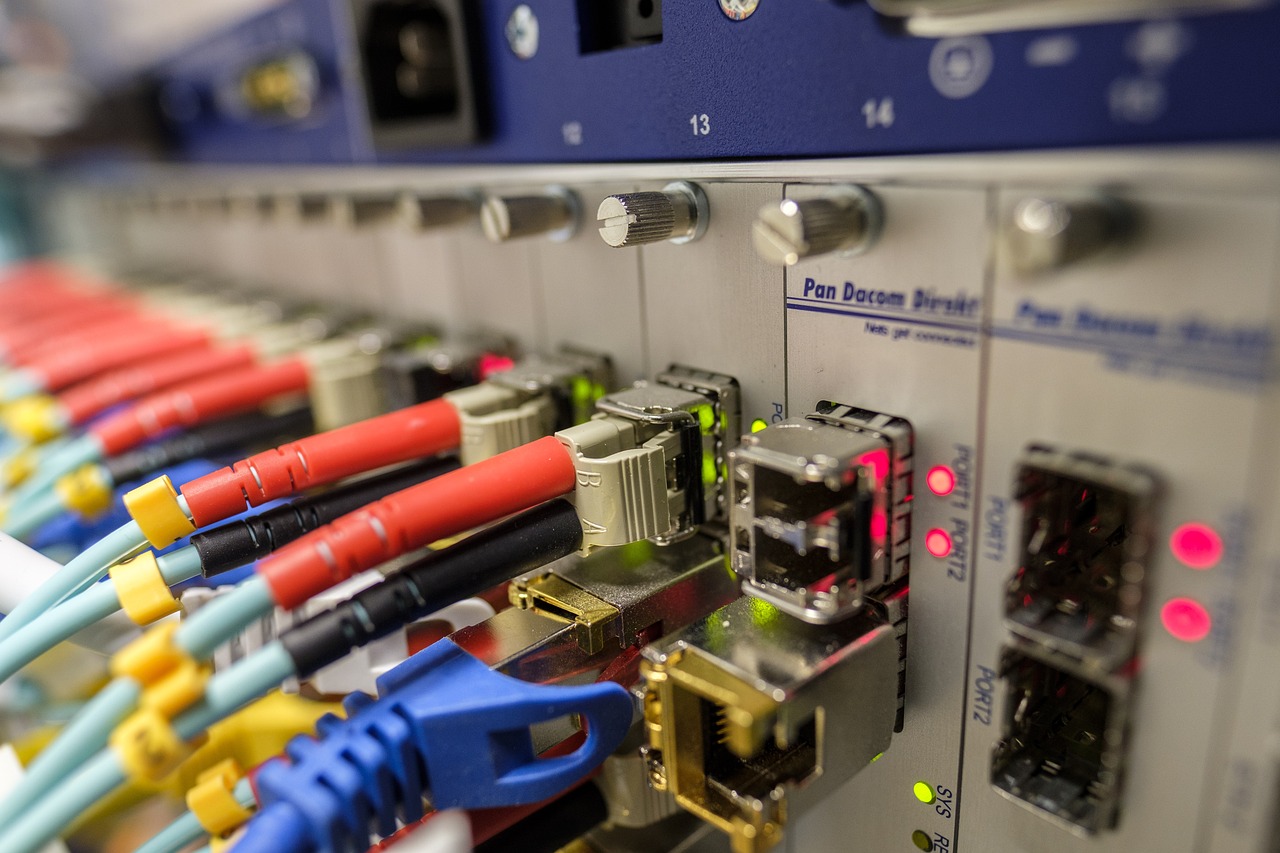LC vs. SC vs. MTP®/MPO vs. Single-Core Fiber: Unraveling the Differences

Exploring the World of Fiber Optics
Fiber optics play a pivotal role in modern communication, revolutionizing the way data is transmitted across vast distances. The use of fiber optics has significantly enhanced the speed and efficiency of telecommunications, enabling seamless connectivity for businesses and individuals alike.
The Importance of Fiber Optics in Modern Communication
Fiber optics are crucial in modern communication due to their ability to transmit large amounts of data at incredibly high speeds. This technology forms the backbone of internet connectivity, telecommunication networks, and high-speed data transfer systems. Its reliability and capacity make it indispensable in meeting the ever-increasing demands for faster and more efficient communication channels.
A Brief Overview of Fiber Optic Connectors and Fiber Types
Fiber optic connectors serve as the interface between optical fibers, facilitating the seamless transmission of data. These connectors come in various types, each designed for specific applications and environments. Additionally, fiber optics are available in different types such as single-mode and multi-mode fibers, each with unique characteristics tailored to diverse communication needs.
By delving into the world of fiber optics, one can gain a deeper understanding of its significance in shaping our interconnected digital landscape.
Next up: Let's delve into a comparison between two widely used fiber optic connectors: LC (Lucent Connector) vs. SC (Subscriber Connector).
LC (Lucent Connector) vs. SC (Subscriber Connector)
When comparing fiber optic connectors, it's essential to understand the unique features and applications of LC (Lucent Connector) and SC (Subscriber Connector).
LC (Lucent Connector): Compact and Efficient
The LC (Lucent Connector) is renowned for its compact design and efficient performance. Its mechanism involves a push-pull coupling system, allowing for easy and secure connections. The small form factor of the LC connector makes it an ideal choice for high-density installations in data centers and enterprise networks. Its compact size enables more connections within limited space, optimizing network efficiency.
Design and Mechanism
The LC connector features a latch mechanism that ensures a reliable connection while minimizing signal loss. Its compact size is attributed to its 1.25mm ferrule, half the size of the SC connector's ferrule. This design feature enhances its suitability for densely populated network environments.
Key Applications and Advantages
The LC connector is widely used in telecommunications, LAN/WAN networking, and high-speed data transmission applications. Its advantages include low insertion loss, easy installation, and compatibility with various fiber types, making it a versatile choice for diverse connectivity needs.
SC (Subscriber Connector): Reliable and Widely Used
The SC (Subscriber Connector) is recognized for its reliability and widespread adoption in telecommunications and networking infrastructures. Its robust push-pull coupling mechanism ensures secure connections without signal interruptions or disconnections during handling or vibrations.
Design and Mechanism
With a larger form factor compared to the LC connector, the SC connector utilizes a 2.5mm ceramic ferrule that provides stability and durability in demanding environments. The non-optical disconnect feature of the SC connector prevents accidental disconnection during operation.
Key Applications and Advantages
The SC connector is extensively used in telecommunication systems, CATV (Cable Television), and data communication networks due to its stable performance over long distances. Its advantages include ease of use, reliable connections, and compatibility with both single-mode and multi-mode fibers.
MTP®/MPO (Multi-Fiber Push-On) Connectors
As the demand for high-density connectivity solutions continues to grow, MTP®/MPO (Multi-Fiber Push-On) connectors have emerged as a key player in the realm of fiber optic technology.
Understanding MTP®/MPO Connectors
Design and Unique Features
The MTP®/MPO connector is designed to accommodate multiple optical fibers within a single, compact connector. Its unique push-pull mechanism allows for swift and secure connections, reducing installation time and ensuring reliable performance. The connector's high-precision alignment sleeves enable precise fiber mating, minimizing signal loss and optimizing data transmission.
High-Density Applications and Benefits
The versatility of MTP®/MPO connectors makes them well-suited for high-density environments such as data centers, telecommunication facilities, and enterprise networks. Their ability to consolidate multiple fibers into a single interface streamlines cable management and maximizes space utilization. This consolidation not only simplifies network architecture but also enhances scalability, making it an ideal choice for evolving connectivity needs.
Comparing MTP®/MPO to LC and SC Connectors
Differences in Design and Application
While LC and SC connectors primarily cater to single-fiber applications, MTP®/MPO connectors excel in multi-fiber scenarios, offering a higher port density within the same physical footprint. The modular design of MTP®/MPO connectors allows for quick deployment of pre-terminated solutions, reducing installation time and labor costs significantly.
Choosing the Right Connector for Your Needs
When considering connectivity options, it's essential to evaluate the specific requirements of your network infrastructure. For applications demanding high fiber counts and efficient use of space, MTP®/MPO connectors present an advantageous solution. Conversely, LC and SC connectors remain viable choices for single-fiber connections where high-density requirements are not paramount.
Single-Core Fiber: The Backbone of Connectivity
In the realm of fiber optics, Single-Core Fiber plays a pivotal role as the backbone of connectivity, serving as a fundamental component in telecommunications infrastructure.
The Role of Single-Core Fiber in Telecommunications
Single-Core Fiber is characterized by its exceptional performance and reliability in transmitting data over long distances. Its design features a single strand of glass or plastic fiber, enabling the seamless propagation of optical signals with minimal signal loss. This type of fiber excels in providing high bandwidth and low attenuation, making it an ideal choice for long-haul communication networks.
Characteristics and Performance
The distinctive characteristic of Single-Core Fiber lies in its ability to carry a single mode of light, resulting in enhanced signal integrity and reduced dispersion. This allows for the transmission of data over extended distances with minimal degradation, making it suitable for applications requiring high data rates and long-distance connectivity.
Single-Core vs. Multi-Fiber: A Comparison
When comparing Single-Core Fiber to multi-fiber options such as MTP®/MPO connectors, the former stands out for its efficiency in point-to-point connections and long-distance transmissions. While multi-fiber solutions excel in high-density scenarios, Single-Core Fiber remains unparalleled in ensuring reliable data transmission over extensive network spans.
Future Trends in Fiber Optic Technology
As technology continues to advance, innovations in Single-Core Fiber are anticipated to further optimize its performance and capabilities. Developments such as enhanced materials and advanced manufacturing techniques are poised to elevate the efficiency and versatility of Single-Core Fiber, contributing to the evolving landscape of fiber optics.
Innovations and Developments
Ongoing research and development efforts aim to enhance the capacity and speed capabilities of Single-Core Fiber, paving the way for next-generation telecommunications networks. Innovations encompassing improved signal amplification, reduced latency, and increased bandwidth are set to redefine the possibilities offered by Single-Core Fiber.
The Evolving Landscape of Fiber Optics
The future holds promising prospects for Single-Core Fiber, with advancements expected to address the escalating demands for higher data rates, extended reach, and enhanced network performance. As technological breakthroughs continue to unfold, Single-Core Fiber will remain at the forefront of driving seamless connectivity across diverse communication environments.
See Also
Contrasting MTP vs. LC/UPC Cables for 100G Fiber Optic Networking
The Importance of SC/APC Color-Coded Pigtails in Single-Mode Networking
Comparing LC and Duplex LC Connectors for Fiber Optic Networking
Exploring the Advantages of MTP to LC/UPC OM4 Multimode Cables
Contrasts Between Single-Mode and Multimode Fiber Optic Cables


